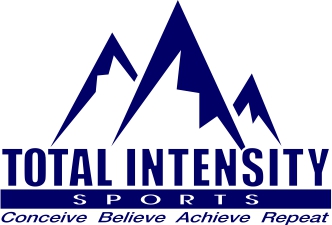
When I first started in triathlon, each year there was a great race series in Ohio (it’s still going on today, 25 years later). They held races in state parks across the entire state. The distances were pretty much the same at each race, but the terrain was different, depending on what part of the state we were in. Some were dead flat and had tons of wind, others had really tough hills and technical descents, and others a mix of something in between. What was great was each year, going to each venue, I had a built in goal. Beat my PR on this particular course. I think we’ve all had that goal in mind from one season to the next when we compete in the same race year after year. In a nutshell, that’s a benchmark.
Within a season, we can also use the concept of a benchmark. We have been incorporating benchmarks into our training at Total Intensity Sports for years. The reasons are many.
- Black and white determination of whether you are improving or getting faster.
- The workout in and of itself, because it is a race-like effort, is going to help you improve.
- You have to work on race day strategies – how to pace yourself and even out your effort so you don’t bonk at the end.
- Motivation – when you know you have benchmarks spread out on your schedule, you’re going to be a little more serious about your training in between them.
- They are fun! It’s a lot of fun to get out and just push yourself. In a group format, it’s fun to push yourself with your teammates. You feel spent, and it is hard, but you feel accomplished once you’re done.
There are many ways to approach a benchmark – whether it in the water, on the bike or running. Here are a few examples, many of which we use in our group training
- Swim (pool) benchmark workouts, such as 3×300 with a 30 second rest interval, or 5×200 with a 30 second rest interval. Your average pace is the benchmark to break.
- Running 3K on the track. 7.5 laps will get you there. Go as fast as you can. While the benchmark is the overall time, the best 3K’s are the ones where you have a pretty even split on each 400. Speeding up in the last couple of 400s means you went out too easy. Dying in the last couple 400s means you went out too fast.
- Run distance benchmarks, on a standard course which has a mix of terrain and is anywhere from 2-4 miles. I like this distance because early in the season, you can do two laps, and later in the year do three or more laps. While the distances aren’t the same, you can get a benchmark on the lap times you’re hitting. It’s awesome to do three laps later in the season with splits faster than earlier in the season when you only did two laps!
- Bike time trials. We do these in varied formats – check out our time trial series. Hills, flat, 20K, 40K, 60K…. they all test you and give yourself tangible numbers to see your progress. You against the clock.
- Hill repeats. Choose a hill, or a set of multiple hills, to time yourself on. Let’s say you have three hills (say A, B and C) which range from ½ mile to 1½ miles in length, and they are all within about 2 miles of each other. Do a warm up, then hit hill A as fast as you can. Recover on your way to the base of hill B and go as hard as you can on hill B. Recover on your way to hill C and do the same thing. Then, return to hill A and do it all again. Maybe do it 3 or 4 times. Hit your lap button on your Garmin at the start/finish of each hill and there you have your benchmark times.
Spread these sessions out across your training so you have time to see real change and progress.
One important aspect of all of these sessions – make sure you’re doing them in a safe environment. Make sure the routes you choose are free of traffic, stop signs, hazards, etc. Don’t risk your own safety or the safety of others simply to set a benchmark PR. When you come upon a situation you have to slow down in the middle of one of your benchmarks, just slow down and be safe. Whatever time it might add to this benchmark, just means a bigger PR when you do it next time.
And, while benchmarks are great for your training, make sure you mix in other types of speed work in between. Technique is another aspect you need to work on and master, which creates speed and efficiency. All of this will give you a bit of variety in your training regimen, and give you tangible numbers to tell you how well your training is working.









